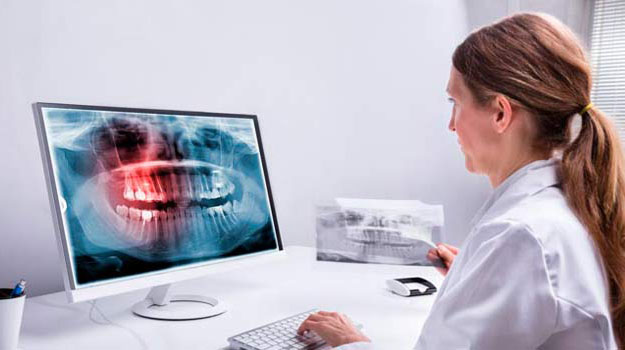Digital X-Rays Dental Reveal What The Naked Eye Can’t See
The form of x-rays date back to the 1800s. That’s when German university professor Wilhelm Conrad Roentgen discovered this technology. He experimented with electromagnetic radiation to x-ray his wife’s hand! But… it wasn’t until the ‘80s when digital x-rays were introduced in dentistry. With the advent of digital dental x-ray technology, dentists gained access to more precise and efficient diagnostic tools, enhancing the quality of patient care and treatment outcomes. Digital dental x-ray radiation, unlike traditional film-based x-rays, allows for minimal radiation exposure to patients while still providing detailed images necessary for accurate diagnosis and treatment planning.
The Ways We Use Digital X-Rays At Park Ridge Dental Associates
The process for taking a digital dental x-ray is very similar to film. First, we’ll move the machine into the correct position to capture a specific area of your mouth. If you’re coming in for your very first exam, it’s a given that we’ll take an x-ray. Digital x-ray dentistry has streamlined this process, allowing for quicker image capture and immediate visualization on a computer screen. Additionally, digital dental x-ray radiation is significantly lower compared to traditional film-based x-rays, ensuring patient safety without compromising diagnostic quality.
X-rays reveal dental issues that can’t be seen with a visual examination alone. They include:
- Tiny Cavities Hidden by Fillings or between Teeth
- Periodontal Disease (gum disease)
- Bone Infections
With early detection of these conditions, our team can help you save time, unnecessary discomfort, and money.
The 4 Types Of Digital X-Rays We Take
- Bitewing– We’ll get you to chomp down on a special piece of paper. The x-ray captures two images on the left side of the mouth and two on the right. This x-ray will reveal just how your teeth line up. It’s fantastic for spotting cavities between teeth. And we have the images we need in a matter of seconds.
- Occlusal– For this digital x-ray, we will get you to close your jaw. Once we snap the image, we’ll see how your bottom and top teeth line up. We can also identify anything out of the ordinary, such as palate and mouth floor abnormalities.
- Periapical– The purpose of this x-ray is to get a closer look at two teeth from the crown to the root.
- Full-Mouth: This x-ray, which utilizes 18 films, captures the inside of your entire mouth.
So there you have it—a quick overview of digital x-rays dental and their many benefits. For exceptional utilizing essential technology, reach out to your Park Ridge dentist today.

Contact Us Today For Dentistry With Digital X-Rays
- Get in and out of the dental chair faster
- Up to 90% less radiation than traditional x-rays
- Shorter insurance processing time
- No exposure to film chemicals – better for you and us
- Painless and precise!
